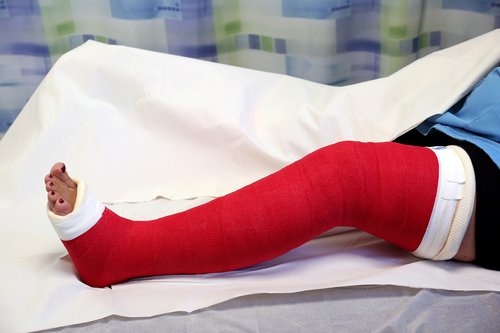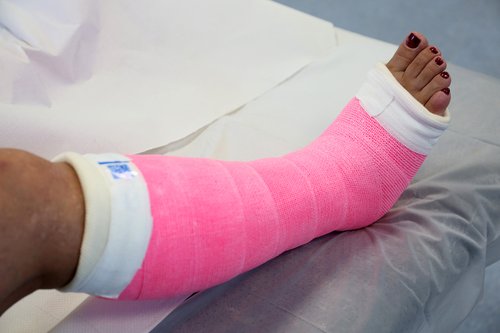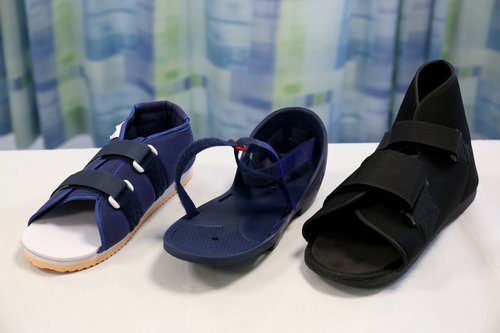Lower Limb Casts
A lower limb cast is a hard covering that stabilises and immobilises either your ankle or knee and sometimes both at the same time.
Above knee cast

These casts go from your thigh to the toes. This cast is used to immobilise the knee and ankle. It is important to keep your toes moving, you may find depending on your injury that your foot and ankle are not included, this is called a cylinder cast.
It is important to be vigilant of lower limb casts rubbing/causing pain. Prolonged pressure on a certain area has the potential to cause skin damage. Common areas this could occur are:
- Around the heel and ankle area
- Over the knee cap
- Around the edge of the casts
Below the knee cast

A below-the-knee cast goes from just below the knee to just below the toes, including the foot and ankle. Immobilises the ankle, preventing rotation and flexion/extension of the foot.
The position of your ankle joint may be different from the image (on the right) but this will vary depending on your injury.
It is often applied to treat fractures/injuries of the lower leg including the ankle and some fractures/injuries to the foot. It is common for patients in below-knee casts to be allowed to weight bear at the discretion of their consultant if so, you will be provided with a shoe (further information about this can be found below).
Pressure Ulcer Prevention's
It is important to be vigilant of lower limb casts rubbing/causing pain. Prolonged pressure on a certain area has the potential to cause skin damage. The most common areas this could occur in are:
- Around the heel and ankle areas
- Around the edge of the casts especially near the little toe
- Around the knee area
- Around the top of the cast
Do
-
Keep your cast clean and dry
-
It's important to keep your toes and knee (If the cast allows you to do so) moving. Clench your toes and open them for 10 minutes every hour – this will help keep the muscles active and help the circulation.
-
When you are either laying down or sitting, rest your leg on a cushion or pillow with your heel higher than your hip and your knee.
Don’t
-
Do not put your cast near any heat e.g. hair dryer or fire.
-
Do not get your cast wet or put plastic bags around the cast, these are not waterproof and can cause skin issues under the cast.
-
Never attempt to trim your cast.
Swelling
Swelling or the symptoms of swelling of the lower limbs is common post-injury/surgery swelling will go up and down depending on the activity the patient is doing at the time. Symptoms include:
- Numbness or tingling in leg, foot or toes.
- Throbbing sensations in casted leg/foot.
- Change of skin colour to exposed areas of skin not in the cast
- The cast may feel tight
- May be more prevalent in the morning or if the casted leg has not been elevated
In order to alleviate swelling/symptoms of swelling, the leg must be elevated with the foot higher than the hip joint – ideally toes in line with the nose this should be done as much as possible.
Find further information regarding the care of your cast and support here
Cast with shoe

Depending on your weight-bearing status you may be given one of these shoes to wear.
They could vary according to the brand but should always be worn when partial weight bearing (you are allowed to put your affected leg down with part of your weight on it) or full weight (means you are allowed to put your affected leg down with your full weight on it). Do not weight bear on your cast without a shoe as your cast will break or you may slip.
Contact
For further information please contact the plaster room.
Cheltenham General Hospital
Tel: 0300 422 3148
Gloucestershire Royal Hospital
Tel: 0300 422 8411
Monday to Friday from 8:30am to 4:30pm